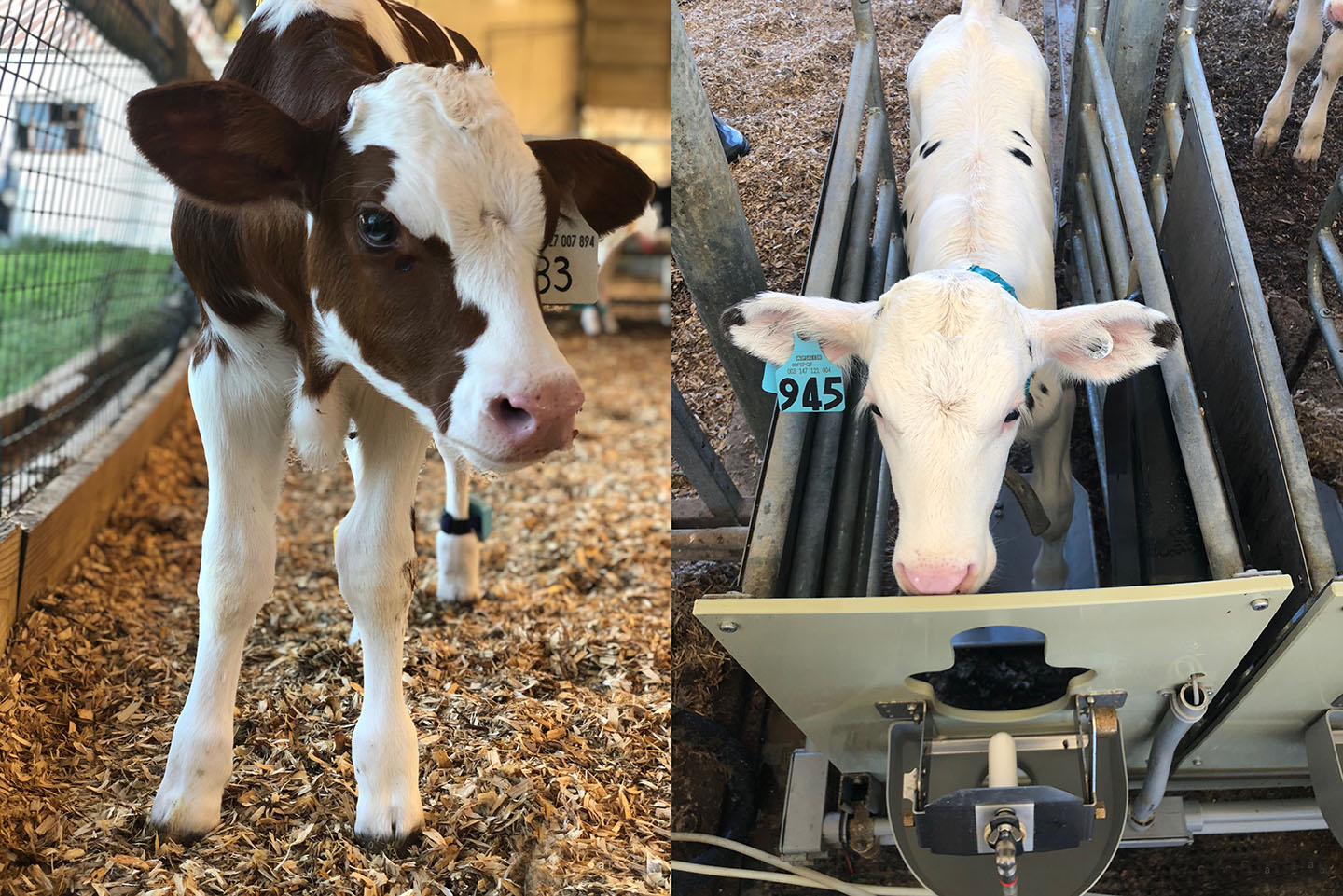Technology helping to predict antibiotic success in dairy calves
Technology helping to predict antibiotic success in dairy calves


Antibiotics are expensive for livestock producers and many times, they fail to stop infections. University of Kentucky College of Agriculture, Food and Environment scientists have observed antibiotic failure in cattle is associated with behavior changes in the first days after treatment. Finding a way to predict antibiotic success or failure before treating dairy calves could save producers money and reduce antibiotic resistance.
Melissa Cantor, former graduate student in the UK Department of Animal and Food Sciences, found during her doctoral research that among calves that received antibiotic treatment for respiratory disease, those that failed to respond to the antibiotics were less active and ate less than calves that did respond to the treatment.
Cantor and UK assistant professor of dairy sciences Joao Costa was the principal investigator of the project, suggest that response to antibiotic treatment in dairy calves, and possibly other species, is measurable using behavioral monitoring technology.
“After treatment, it was interesting that calves with antibiotic failure behaved differently in the few days after the diagnosis compared to calves that were eventually cured from respiratory disease,” said Cantor, who is now a postdoctoral fellow at the University of Guelph in Ontario, Canada. “Calves that will recover after an antibiotic treatment eat more, are more active, and have better activity patterns during recovery than those that fail to respond to antibiotic treatment. We now have data to demonstrate that behavior is a quantifiable metric.”
UK Dairy Science researchers found that technology such as activity trackers and a robotic-automated feeder could help identify changes in a calf’s behavior before clinical symptoms re-emerged in the calves. This is important because calves typically are not re-treated for respiratory disease until a week or longer after treatment when clinical symptoms of the disease have either not resolved or re-emerged. Costa believes the discovery is an important step in the journey to reduce antibiotic use on the farm and it could also impact other industries.
“These calves could be identified and given special attention on-farm which improves their welfare,” Costa said. “The possibility to automate this process with technology on any farm is an exciting step for the future.”
Calves in the study wore an activity tracker on their left rear leg. A robotic automated feeder recorded the calf’s daily milk intake, drinking speed, visits and grain intake. Researchers performed daily health exams on a group of calves for the first 90 days of life. Of this group, 38 calves with respiratory disease were enrolled in the study and treated with antibiotics on the day of diagnosis. Recovered calves improved their grain intake and were generally more active, while relapsed calves had depressed feed intake, and had longer lying-down times in the first week after treatment. Costa said these results suggest that there is the new potential for precision technology devices on farms to automatically identify calves relapsing with respiratory disease before re-emergence of the clinical disease.
“Sickness behavior may be an early indicator of failure to respond to antibiotic treatment for respiratory disease, and it may be useful to create algorithms that will automatically detect antibiotic failure,” Costa said. “Future research will focus on the development of these technology-based alerts to identify antibiotic failures early, increasing the chance of recovery in the calves.”
Research

